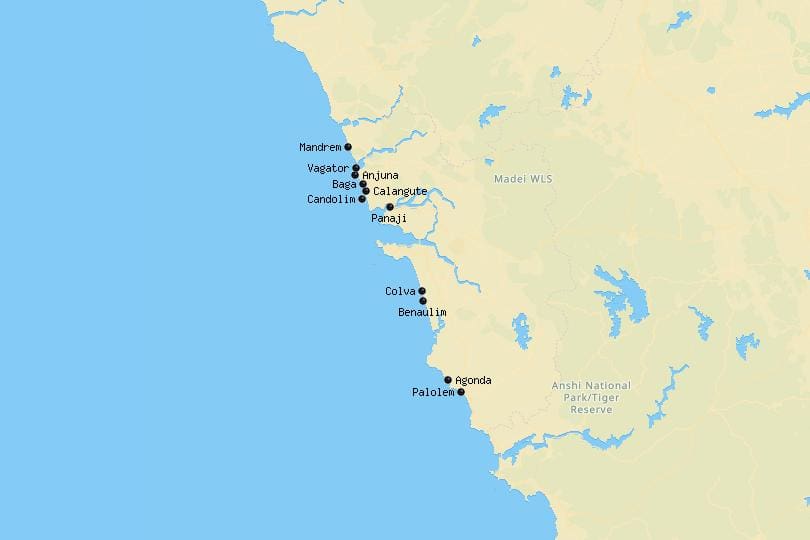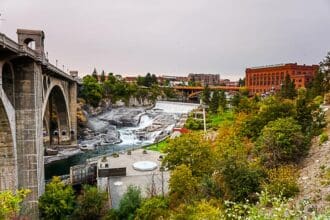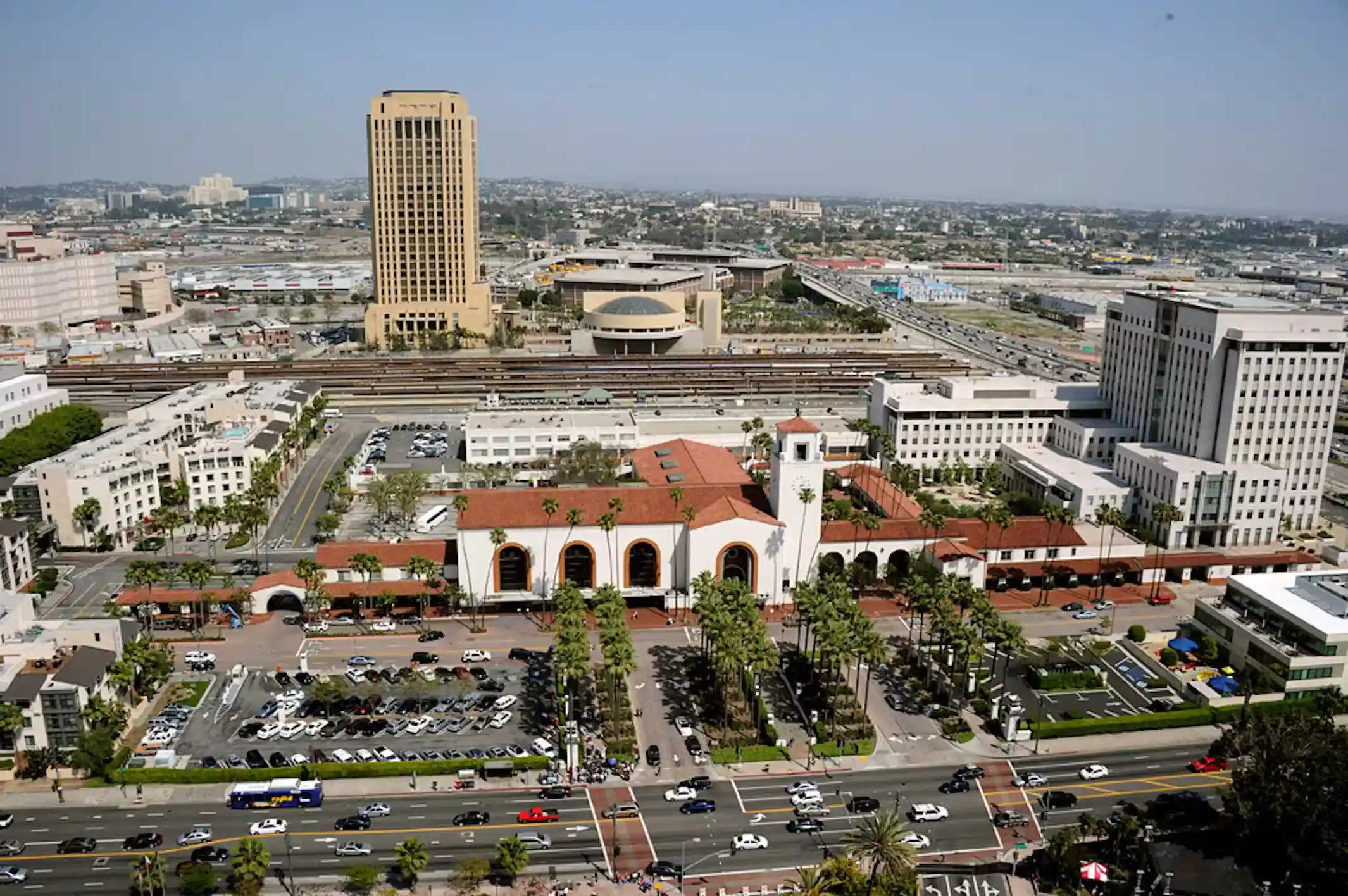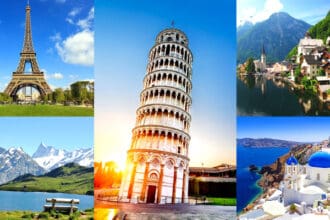Are you planning a trip to Vietnam and looking for an extraordinary destination? Look no further than Sapa, a captivating town nestled in the Hoang Lien Son Mountains. Sapa is known for its awe-inspiring landscapes, ethnic diversity, and unique cultural experiences. In this article, we will explore the 10 best things to do in Sapa, Vietnam, ensuring an unforgettable adventure for every traveler.
I. Introduction
Located in northwest Vietnam, Sapa is a picturesque town that attracts visitors with its breathtaking natural beauty. The town is surrounded by lush rice terraces, towering mountains, and vibrant ethnic minority communities. Sapa offers a plethora of activities and attractions for nature lovers, culture enthusiasts, and adventurous souls.
II. Trekking in Sapa
Sapa is renowned for its incredible trekking opportunities. Lace up your hiking boots and embark on a journey through the stunning landscapes of the region.
A. Hiking to Fansipan Mountain
Rising to a height of 3,143 meters, Fansipan Mountain is the highest peak in Indochina. Trekking to the summit of Fansipan is an adventure of a lifetime, rewarding you with panoramic views of the surrounding mountains and valleys.
B. Exploring Cat Cat Village
Cat Cat Village is a charming Hmong ethnic village located just a short distance from Sapa. Take a leisurely stroll through the village, witness traditional handicrafts being made, and immerse yourself in the Hmong culture.
C. Visiting Lao Chai and Ta Van Villages
Lao Chai and Ta Van are two picturesque villages inhabited by the Black Hmong and Giay ethnic groups. Trekking through the terraced rice fields, you will have the opportunity to interact with the locals, learn about their customs, and admire their unique way of life.
III. Discovering the Rice Terraces
The rice terraces of Sapa are a sight to behold. Marvel at the intricate landscapes and learn about the ancient agricultural practices that have shaped the region for centuries.
A. Marveling at the Muong Hoa Valley
The Muong Hoa Valley is home to some of the most beautiful rice terraces in Sapa. Take a leisurely hike through the valley, surrounded by cascading terraces and lush greenery.
B. Visiting the Terraced Rice Fields
Explore the terraced rice fields up close and witness the labor-intensive process of rice cultivation. The terraces change their colors with the seasons, creating a breathtaking tapestry of vibrant hues.
C. Interacting with the Local Ethnic Groups
As you explore the rice terraces, you will encounter ethnic minority groups such as the Hmong, Dao, and Tay. Engage with the locals, learn about their farming techniques, and gain insight into their rich cultural heritage.
IV. Exploring the Love Waterfall
Hidden in the lush green forests of Sapa, the Love Waterfall is a mesmerizing natural wonder. Embark on a trek through the jungle, following the sound of cascading water, and discover this enchanting waterfall.
A. Description of Love Waterfall
The Love Waterfall gets its name from a local legend and is renowned for its romantic ambiance. The waterfall cascades down from a height of 100 meters, surrounded by dense vegetation and captivating rock formations.
B. Hiking to Love Waterfall
To reach the Love Waterfall, you will embark on a scenic trek through the verdant forest. The trail is filled with beautiful flora and fauna, making the journey as enjoyable as the destination.
C. Enjoying the Surrounding Nature
Once you arrive at the Love Waterfall, take a moment to soak in the serene atmosphere. The mist created by the waterfall, combined with the surrounding greenery, creates a tranquil oasis that is perfect for relaxation and contemplation.
V. Immerse in Local Markets
One of the highlights of visiting Sapa is experiencing the vibrant local markets. These bustling marketplaces offer a glimpse into the daily lives and vibrant cultures of the ethnic minority communities.
A. Visiting Sapa Market
Sapa Market is the heart and soul of the town. Here, you can find a wide range of goods, including traditional handicrafts, clothing, fresh produce, and souvenirs. Immerse yourself in the lively atmosphere, bargain with the vendors, and sample local delicacies.
B. Exploring Bac Ha Market
For a more authentic market experience, head to Bac Ha Market, located a short distance from Sapa. This market is famous for its colorful displays of ethnic textiles, handicrafts, and livestock. It is a true feast for the senses.
C. Experiencing the Vibrant Atmosphere
The markets of Sapa and Bac Ha are not just places to shop; they are social hubs where locals gather to socialize, exchange news, and celebrate their cultural heritage. Take the time to interact with the friendly locals and immerse yourself in their vibrant world.
VI. Experiencing Homestays
To truly experience the rich culture of Sapa, consider staying with a local family in one of the ethnic minority villages. Homestays offer a unique opportunity to live like a local, learn about traditional customs, and indulge in authentic Vietnamese cuisine.
A. Staying with Local Families
Many families in Sapa open their homes to visitors, offering comfortable accommodation and warm hospitality. By staying with a local family, you will gain valuable insights into their way of life and create meaningful connections.
B. Learning about Traditional Customs
During your homestay, the hosts will share their traditions, rituals, and daily routines with you. Participate in activities such as traditional cooking, handicraft making, and traditional ceremonies to gain a deeper understanding of the local culture.
C. Enjoying Authentic Vietnamese Cuisine
One of the highlights of a homestay in Sapa is the opportunity to savor authentic Vietnamese cuisine. Indulge in dishes prepared with fresh, locally sourced ingredients, and learn the secrets of Vietnamese cooking from your gracious hosts.
VII. Admiring the Silver Waterfall
The Silver Waterfall is another natural wonder that should not be missed during your visit to Sapa. Located just a short drive from the town, this majestic waterfall is a sight to behold.
A. Description of Silver Waterfall
The Silver Waterfall derives its name from the shimmering silver color of the water as it cascades down the rocks. Surrounded by lush vegetation and towering mountains, this waterfall creates a picturesque setting for nature lovers.
B. Taking in the Majestic Scenery
Witness the raw power of nature as you stand in awe of the Silver Waterfall. The mist generated by the cascading water, combined with the dramatic backdrop of mountains, creates a truly breathtaking sight.
C. Capturing Stunning Photographs
Photography enthusiasts will find endless opportunities to capture memorable shots at the Silver Waterfall. Experiment with different angles and compositions to immortalize this natural wonder in all its glory.
VIII. Relaxing at Sapa’s Hot Springs
After a day of exploring, treat yourself to some relaxation and rejuvenation at Sapa’s hot springs. These natural hot springs offer a soothing retreat, perfect for unwinding and pampering yourself.
A. Overview of Sapa’s Hot Springs
Sapa is blessed with natural hot springs that are rich in minerals, known for their therapeutic properties. The hot springs provide a calming experience, melting away the fatigue from your body and rejuvenating your senses.
B. Soaking in the Mineral-rich Waters
Indulge in a relaxing soak in the mineral-rich waters of Sapa’s hot springs. Let the warm waters envelop your body, soothing your muscles and relieving any tension. It’s the perfect way to unwind and recharge.
C. Unwinding and Rejuvenating
Take advantage of the tranquil surroundings and indulge in additional spa treatments offered at the hot springs. From massages to facials, these treatments will further enhance your relaxation and leave you feeling refreshed and revitalized.
IX. Exploring Sapa Stone Church
Sapa Stone Church, also known as Our Lady of the Rosary Church, is a significant religious and architectural landmark in the town. Pay a visit to this beautiful church and soak in its historical and cultural significance.
A. History and Architecture of Sapa Stone Church
Sapa Stone Church was built by the French in the late 19th century and is a testament to the town’s colonial past. The church’s architecture combines French Gothic style with traditional ethnic elements, creating a unique and captivating structure.
B. Visiting the Church and Its Surroundings
Step inside the church and admire its elegant interior adorned with beautiful stained glass windows and religious artworks. Take a moment for quiet contemplation or attend a Sunday Mass to experience the spiritual ambiance of the church.
C. Attending a Sunday Mass
If you have the opportunity, attending a Sunday Mass at Sapa Stone Church is a culturally enriching experience. Witness the devotion of the local Catholic community and immerse yourself in the spiritual traditions of the town.
X. Indulging in Local Cuisine
No visit to Sapa is complete without indulging in the delicious local cuisine. Sapa’s culinary scene offers a fusion of Vietnamese and ethnic minority flavors, tantalizing your taste buds with its unique and diverse dishes.
A. Sampling Sapa’s Specialty Dishes
Treat your palate to the flavors of Sapa by sampling some of its specialty dishes. From grilled mountain pork to bamboo-tube rice, each dish reflects the region’s agricultural heritage and the culinary traditions of its ethnic communities.
B. Trying Authentic Vietnamese Pho
Vietnam’s most iconic dish, pho, is a must-try in Sapa. Savor the rich, aromatic broth, tender rice noodles, and your choice of meat or vegetables, all garnished with fragrant herbs and spices. It’s a culinary delight that will leave you craving for more.
C. Discovering Street Food Delights
Immerse yourself in the vibrant street food scene of Sapa. Wander through the night markets and sample local favorites such as banh mi (Vietnamese baguette sandwiches), spring rolls, and fresh fruit shakes. The streets of Sapa are a treasure trove of flavors waiting to be discovered.
Conclusion
Sapa, Vietnam, offers a plethora of experiences that cater to every traveler’s desires. From breathtaking treks and awe-inspiring landscapes to immersive cultural encounters and tantalizing cuisine, Sapa has it all. Embark on this unforgettable journey and create memories that will last a lifetime.
FAQs
- What is the best time to visit Sapa?
- The best time to visit Sapa is from March to May and from September to November when the weather is mild and the rice terraces are in their most vibrant state.
- Are English-speaking guides available in Sapa?
- Yes, there are English-speaking guides available in Sapa who can assist you in exploring the region and provide valuable insights into the local culture.
- How can I get to Sapa from Hanoi?
- The most convenient way to reach Sapa from Hanoi is by taking an overnight train or a bus. Both options offer comfortable transportation and beautiful scenery along the way.
- Is it safe to trek in Sapa?
- Trekking in Sapa is generally safe, but it is recommended to hire a local guide who is familiar with the area and can ensure your safety throughout the trek.
- What should I pack for a trip to Sapa?
- It is advisable to pack comfortable walking shoes, warm clothing, sunscreen, a hat, insect repellent, and a raincoat as the weather in Sapa can be unpredictable.


















I wanted to thank you for this great read!! I definitely enjoying every little bit of it I have you bookmarked to check out new stuff you post…
You really make it seem really easy with your presentation however I find this topic to be actually something that I feel I’d by no means understand. It kind of feels too complicated and very vast for me. I’m taking a look ahead in your next publish, I?¦ll attempt to get the hang of it!
Este site é realmente fascinate. Sempre que consigo acessar eu encontro coisas diferentes Você também vai querer acessar o nosso site e saber mais detalhes! informaçõesexclusivas. Venha descobrir mais agora! :)
It is in point of fact a nice and helpful piece of information. I am glad that you shared this helpful info with us. Please stay us up to date like this. Thank you for sharing.